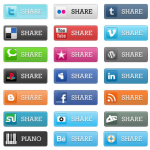Solving A Universal COVID-19 Business Problem
A case study on how Intermountain Lacrosse (IMLAX), a 501(c)3 non-profit organization dedicated to the organization and growth of youth lacrosse in Utah and southern Idaho, and the largest geographic league in the U.S., is using HealthShield from 42Chat to safely reopen its league.
With over 179 teams and 3500 players, across 50 different programs in 20 locations, the idea of gathering thousands of COVID symptom screenings in a consistent, compliant, and timely manner was daunting. Adding to the complexity was that 75 percent of the audience – the children – couldn’t vouch for themselves, which meant that parents had to do so. And often, the parents had multiple kids playing on different teams and different fields. How would parents be in two places at once to vouch for their children and sign a paper survey? How would the league track all of the paper surveys, communicate which children had completed the survey, and where would they store them in order to prove compliance if needed? The levels of complexity were great, and the liability factor serious.
Learn more about how they did it, here.


 Every marketer expects a return on their social media efforts, but many still struggle with prioritizing which social networks to use – and how to allocate resources.
Every marketer expects a return on their social media efforts, but many still struggle with prioritizing which social networks to use – and how to allocate resources.  Everyone preaches about building relationships with online influencers, but no one ever shares tips for how to do that. So,
Everyone preaches about building relationships with online influencers, but no one ever shares tips for how to do that. So,  A recent survey indicates that more than 60 percent of Fortune 500 companies use some form of social media marketing, but most companies still don’t fully understand the benefits of social media. So Marketing Consultant, and
A recent survey indicates that more than 60 percent of Fortune 500 companies use some form of social media marketing, but most companies still don’t fully understand the benefits of social media. So Marketing Consultant, and  Want more retweets on Twitter? Sure, who doesn’t, right? So… have you tried asking for them? The truth is, calls to action may not be sexy, and they may not be good social etiquette, but they work, and they work on Twitter. And Facebook. And blogs.
Want more retweets on Twitter? Sure, who doesn’t, right? So… have you tried asking for them? The truth is, calls to action may not be sexy, and they may not be good social etiquette, but they work, and they work on Twitter. And Facebook. And blogs.  Newsletter creation can be remarkably challenging for even the most prolific writer. After all, your newsletter has some lofty goals: get through spam filters, attract readers’ eyes, get opened, get read, get click-thrus, convert to a lead, and if all the stars align – result in a sale. Phew!
Newsletter creation can be remarkably challenging for even the most prolific writer. After all, your newsletter has some lofty goals: get through spam filters, attract readers’ eyes, get opened, get read, get click-thrus, convert to a lead, and if all the stars align – result in a sale. Phew!  Video is the undisputed darling of the marketing world in 2012. There are a variety of reasons web-based video is such an important media vehicle, and marketers that understand the nuances will be more successful than the laggards. To get started, Kent Lewis of
Video is the undisputed darling of the marketing world in 2012. There are a variety of reasons web-based video is such an important media vehicle, and marketers that understand the nuances will be more successful than the laggards. To get started, Kent Lewis of  Social media, although a relatively recent phenomenon, has become an increasingly more important part of marketing and client base development platform for businesses. What could once be accomplished by a traditional website now needs to be supplemented by a robust and responsive utilization of the tools social media offers. Forbes contributor Jessica Bosari explains
Social media, although a relatively recent phenomenon, has become an increasingly more important part of marketing and client base development platform for businesses. What could once be accomplished by a traditional website now needs to be supplemented by a robust and responsive utilization of the tools social media offers. Forbes contributor Jessica Bosari explains  David Murdico at
David Murdico at  Social Media in business can be a great way to get in touch and stay in touch with clients, but there is a method to the madness. ClikCloud founder Dan Shapriro offers suggestions on how to create a positive, engaging social media presence in
Social Media in business can be a great way to get in touch and stay in touch with clients, but there is a method to the madness. ClikCloud founder Dan Shapriro offers suggestions on how to create a positive, engaging social media presence in 

